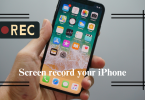Dropbox and Google Drive are two common cloud storage services where you can save your files on the web. Instead of being restricted to a hard disk. Both cloud services that include mobile and desktop applications in which you can organize files in a folder and let the service sync them in the cloud. Along with Microsoft’s OneDrive, they make up the big three cloud storage providers. This is how Dropbox and Google Drive compare. In this article, we will talk about Dropbox Vs Google Drive. Let’s see which one is better.
Contents
ACCOUNT VALUE
Firstly, it is worth noting how Google Drive and Dropbox account subscriptions compare. Both cloud storage providers offer free storage. Google Drive provides 15GB of free storage for personal use, compared with Dropbox 2GB.
So in that respect, Google Drive mostly offers better value. But Dropbox users can gain extra free storage based on the options available to them.
Each referral that signs up for Dropbox will give you an additional 500 MB, and switching on automatic photo upload expands storage by 3GB. The maximum storage amount that the free version of Dropbox can have is 16 GB. So 28 referrals on top of your starting storage will get you there.
The annual subscription pricing for Dropbox and Google Drive are similar. Dropbox offers 2TB of cloud storage for $119.88 per year (no monthly payment option). And Google Drive offers 2TB of cloud storage for $99.99 per year or $9.99 per month, totaling $119.88 per year.
PLATFORM COMPATIBILITY
Google Drive is compatible with Windows (7, 8, 8.1, 10, and 10 in S mode), Mac, iOS, and Android. You can’t “natively” use its desktop app on Linux. But Google is working on fixing that. Regardless, the web browser client still works for any operating system.
Dropbox is compatible with one additional platform compared to Google Drive, including Windows (7, 8, 8.1, 10, and 10 in S mode), Mac, iOS, Android, and Linux. Now, it also supports systems such as Xbox One. But it is basically just a special Windows version of the app. So it is not listed in their requirements.
THE DROPBOX AND GOOGLE DRIVE WEB CLIENTS
The Dropbox and Google Drive Web clients enable you to organize and edit cloud storage files in your browser. Google Drive’s Web client has the notable advantage of having its very own office suite for you to edit files. Still, Dropbox also enables users to edit text documents, spreadsheets, and presentations with the Microsoft Office Online suite. You can also edit MS Office files with the Android and iOS Dropbox mobile apps. Dropbox users can also edit the .ocx, .xlsx and .pptx file formats. Along with MS Word, Excel, and PowerPoint online tools. as well as the mobile application versions.
However, Google Drive’s office suite, known as Google Docs, Forms, Drawings, Sheets, and Slides, is still better for editing documents than the Dropbox. For starters, you can also edit a much wider variety of document formats in Google Drive. You can also create new docs from scratch. So if you need to edit documents, Google Drive is your best bet.
Google Drive integrates with numerous Google Web apps and services such as Gmail, Calendar, Pixlr Editor, Drive Notepad, YouTube, Google Plus, and Google Maps. For example, Google Photos is almost built-in to Drive as it shares the same storage. Google Photos enables you to save images to Drive without using any storage space when choosing its High quality (free unlimited storage) option. Gmail users can also quickly save email attachments to Google Drive.
Further
Dropbox has widespread, third-party app integration. Dropbox’s open API make sure developers can easily create applications for the service. Estimates highlight that there are more than 100,000 third-party apps to sync with Dropbox. With some of those apps, users can host a site in Dropbox, collect URL clippings to Dropbox, and sync Google Docs to Dropbox.
Google Drive’s web client has better search tools than what Dropbox offers. This feature is not entirely surprising as it comes with Google’s own advanced search tools. Clicking the downward triangle, located on the right side of Google Drive’s search box, opens the tools and options that enable you to search for more specific file types with additional filters on top.
DESKTOP AND MOBILE CLIENT APPS
Both Dropbox and Google Drive have mobile and desktop apps with which you can sync and share files. Overall, the desktop client apps are relatively similar. However, Dropbox is compatible with more desktop and mobile platforms, as previously mentioned. With that thought in mind, Dropbox’s client apps enable more sync compatibility.
The Dropbox desktop client generally has more flexible file management than google drive. One limitation of the Google Drive desktop client is that it only opens documents in Google Docs, so you’ll need to export files from Docs to edit them in other software. Another advantage of Dropbox’s desktop and mobile apps is that they don’t have any maximum file size limit for uploads (but the website’s file upload limit is 10 GB). Google Drive has a maximum upload limit of five TB, but that should still be more than enough in most cases.
Since Dropbox partnered with Microsoft, its client apps also have better Windows integration. For example, the native Dropbox Windows 10 app is built upon the Universal Windows Platform. Consequently, users can drag and drop files from File Explorer into the app to save to the cloud. You can also accept shared folder invites with Windows 10 notifications, and the app also supports Windows Hello, which gives you an alternative way to sign in to Dropbox.
ENCRYPTION | Dropbox Vs Google Drive
Dropbox boasts a 256-bit AES encryption level, which is military-grade. In comparison, Google Drive has weaker 128-bit AES encryption. However, Google Drive has a higher 256-bit SSL encryption for file transfer. That’s better than Dropbox’s 128-bit SSL encryption. Both Drive and Dropbox also have two-step verification, but neither has a personal encryption key option.
FILE TYPE SUPPORT
Google Drive supports up to 30 file types that you can view in your browser. Users can browse images, videos, audio, documents, text, markup, archives, MS Office files, Apple and Adobe (PDF, Photoshop, and Illustrator) file types in various formats. Also. There are third-party apps for Drive that manage even more file types.
The number of file types that Dropbox can preview is a little more limited. In Dropbox you can instantly see documents, presentations, spreadsheets, basic text, links, videos and audio files in several formats. When it comes to editing the files, you can only modify MS Office file formats in Dropbox using its Office Online integration. Aside from that, you will have to download any other file format to edit it.
CUSTOMER SUPPORT | Dropbox Vs Google Drive
Google Drive offers better customer assistance than Dropbox. Google Drive subscriptions. That includes phone support, and you can also get tech support through e-mail, live chat, Google Drive forum, and site tutorials. Dropbox lacks the live chat and phone services. But it still has a forum, site, and email support for cloud storage.
All things considered, there is not much between Google Drive and Dropbox. With its more flexible subscription packages and greater storage capacities out the door, Google Drive has better account value. Its web client has more features, greater file type support, and a better search tool compared to Dropbox. Therefore, Google Drive is most likely the better cloud storage provider.
However, Dropbox does have more flexibility with its streamlined desktop and mobile client apps, extensive third-party app support, and greater platform compatibility. These features make Dropbox ideal for standard file sharing across multiple devices.
Conclusion
Alright, That was all Folks! I hope you like this Dropbox Vs Google Drive article and find it helpful to you. Give us your feedback on it. Also if you guys have further queries related to this article. Then let us know In the comments section below. We will get back to you shortly.
Have a Great Day!
Also See: User Guide On Uninstall Python3 In MacOS






